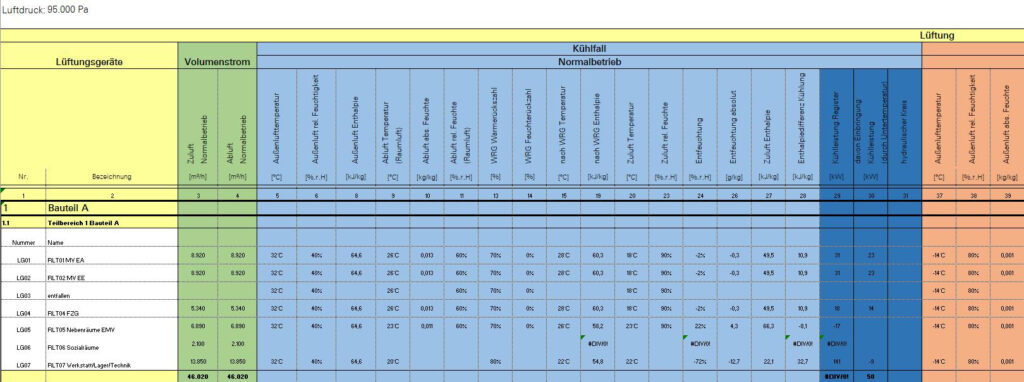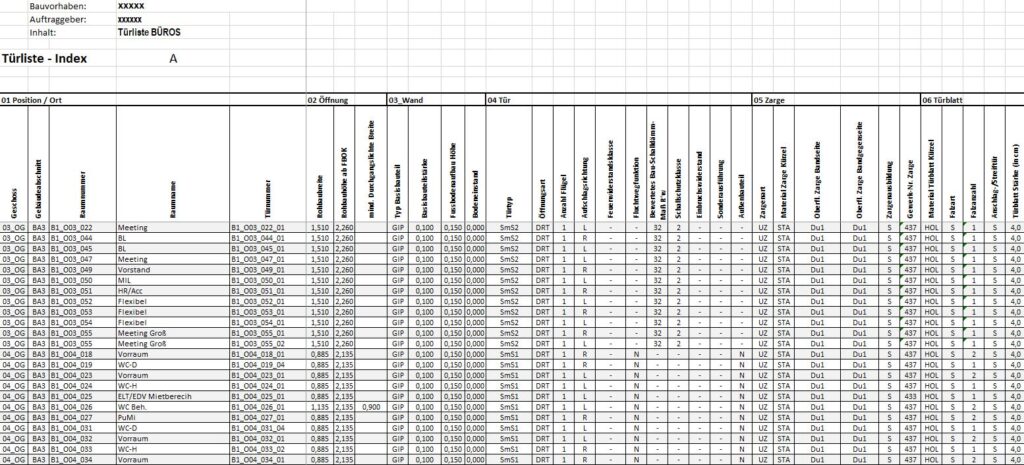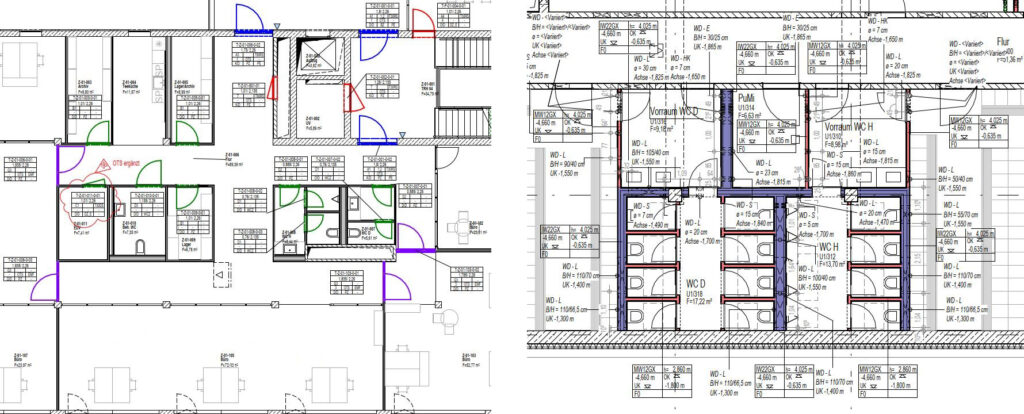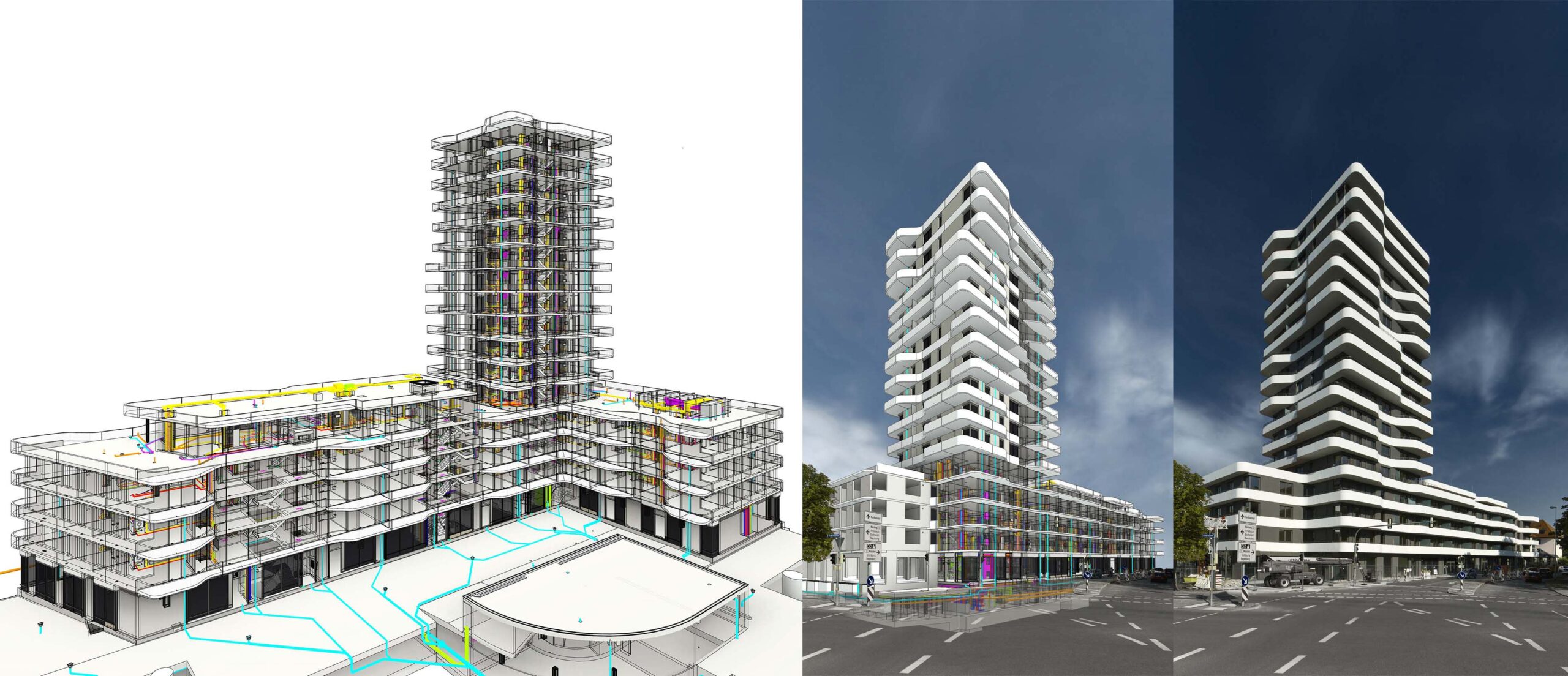Fig. 1: IN-Tower Ingolstadt
ATP – one of the Europe-wide pioneers in integrated design with BIM
We had the great pleasure of speaking with Sonja Winstermann and Hannes Reichholf from ATP about the implementation, advantages, and diverse application areas of our software Tables. Founded in 1951 in Innsbruck, ATP has grown over the decades into one of the largest international architectural firms for integrated design, employing around 1,500 people across 13 locations in Austria, Germany, Switzerland, Hungary, Poland, and Croatia. In addition to office, hotel, and residential buildings, ATP focuses on large-scale projects in urban development, healthcare, tourism, the automotive industry, and food production and logistics.
We spoke with Sonja Winstermann, who has been working in design at ATP Munich since 2011. She entered the BIM field in 2011 through a Revit training and initially used the software for modeling and 3D. In 2012, she took on the role of BIM Manager in Munich and conducted internal training sessions on the software until 2014, and again from 2020. She first encountered Jochen Reichert in 2013 while working with the b.i.m.m. Tools, since Planworks is an official partner and co-founder of building information model management (b.i.m.m) GmbH. Currently, she focuses on the development of families, workflows, and tools, and, as Product Owner, oversees the cross-location BIM topic area “INT” (Integrated Design).
Hannes Reichholf, BIM Liaison Officer at ATP, also took part in our conversation. He has been with the company since 2006 and transferred internally in 2012 to Plandata (an IT subsidiary), where he worked as a BIM trainer providing internal and external Revit training. This included instruction on using the b.i.m.m. Tools, which led to the connection with Planworks. In 2020, the IT department of Plandata was taken over by the parent company ATP Holding, and since then, Reichholf has served as BIM Liaison Officer, acting as a link between ATP institutions and being responsible for BIM quality assurance within the ATP Group.

Fig. 2: Excerpt from an equipment list for ventilation units
«The recipe for success, for me,
is clearly the functional proximity
to the main software Revit.»
ATP discovers the potential of Tables
In a company the size of ATP, the focus is clearly on optimizing internal processes. Winstermann recalls a 2019 meeting where the idea of using Tables in building services engineering was first evaluated. At the time, ATP was looking for ways to quickly and easily perform rough calculations. Until then, there was no way within the company to quickly extract and import Excel-based data from Revit models and ensure accurate value assignments.
However, once she was introduced to the functionality of Tables, Winstermann had a different thought during the meeting: “This could be perfect for door schedules.” Shortly thereafter, Tables training sessions were held for all BIM coordinators, and discussions began between Winstermann, Reichholf, and Reichert to explore further use cases for the software tool.
After Tables was quickly integrated into the MEP workflow and Winstermann had programmed an “almost perfect” door schedule—still in use today—the next logical step was using the tool for creating room books. More and more applications were discovered, and the software’s use gradually expanded within the company.

Fig. 3: Excerpt from the door schedule of an office building.
User experience in working with Tables
Naturally, we were curious about the benefits and challenges of using Tables in a large office like ATP. Reichholf began by explaining how software is evaluated within the company: “Revit holds data sovereignty as the ‘single source of truth’. That means software close to Revit is preferred in our workflows.” For him, the ease of use is a major advantage of Tables: “The recipe for success, for me, is clearly the functional proximity to our main software Revit. The table control is identical to that in Revit, and the basic configuration fully matches Revit,” he explains. He also sees a strong advantage of the software in the construction industry’s inherent “list-thinking”. “In my personal ranking, right after Revit, come the b.i.m.m. Tools and Tables. Tables, because for us it represents the importance of list integration. A good workflow depends on well-structured and processable lists.”
According to Reichholf, Tables performs the required evaluations in an ideal way.
Winstermann also sees clear advantages in working with the tool: “With Tables I can create cool door schedules, and the huge advantage is simply that it’s directly connected to Excel.” This was a deal-breaker for other software solutions, where she consistently criticized the lack of Excel compatibility. Tables solves this problem and functions as a simple interface between Revit and Excel, enabling users to import and export data to and from the model even without Revit knowledge. However, Winstermann emphasizes that understanding how Revit works is definitely beneficial, as it opens up greater freedom for data evaluation.

According to Reichholf, everything from CO₂ calculations and tendering to checklists is now handled with Tables. The tool is also used in the “BIM Factory” – ATP’s operations planning division. ATP now even uses Tables to create machine occupancy lists and technical room lists in the healthcare sector. Over the years, the digital transformation has led to a close and ongoing exchange between ATP and Planworks. ATP receives direct support in using the Tables software, while Planworks uses the feedback to continuously improve it.
Sonja Winstermann plays a key role as a test user, contributing valuable feedback on new features and tools to help shape the software’s development.

Fig. 5: Excerpt from a building component layer catalog linked to U-value calculation.

Fig. 6: Excerpts from overview plans – doors (left) & drywall partitions (right)
«Just like the proximity of Tables to Revit,
the closeness of Planworks to the customer
is also key to success.»
The success formula behind the collaboration between ATP and Planworks
The key to the long-standing and successful cooperation between the two companies can be clearly stated, says Reichholf: “Just as Tables is close to Revit, Planworks is close to the customer—and that’s essential for success.”
Large firms and software providers are often too slow to respond directly to requests or problems. On the other hand, smaller companies frequently lack a clear overview of what can occur during the process. “Planworks is small enough to be agile, but big enough to be taken seriously. That mid-size scale is simply ideal for collaboration,” he concludes.
Moreover, the ability to actively help shape the software through feedback is one of the decisive factors in ATP’s satisfaction with the partnership.
Download
Here you can download the full article in german.
Planworks GmbH 2024
Photos & Pictures: ©ATP architekten ingenieure

0 Comments